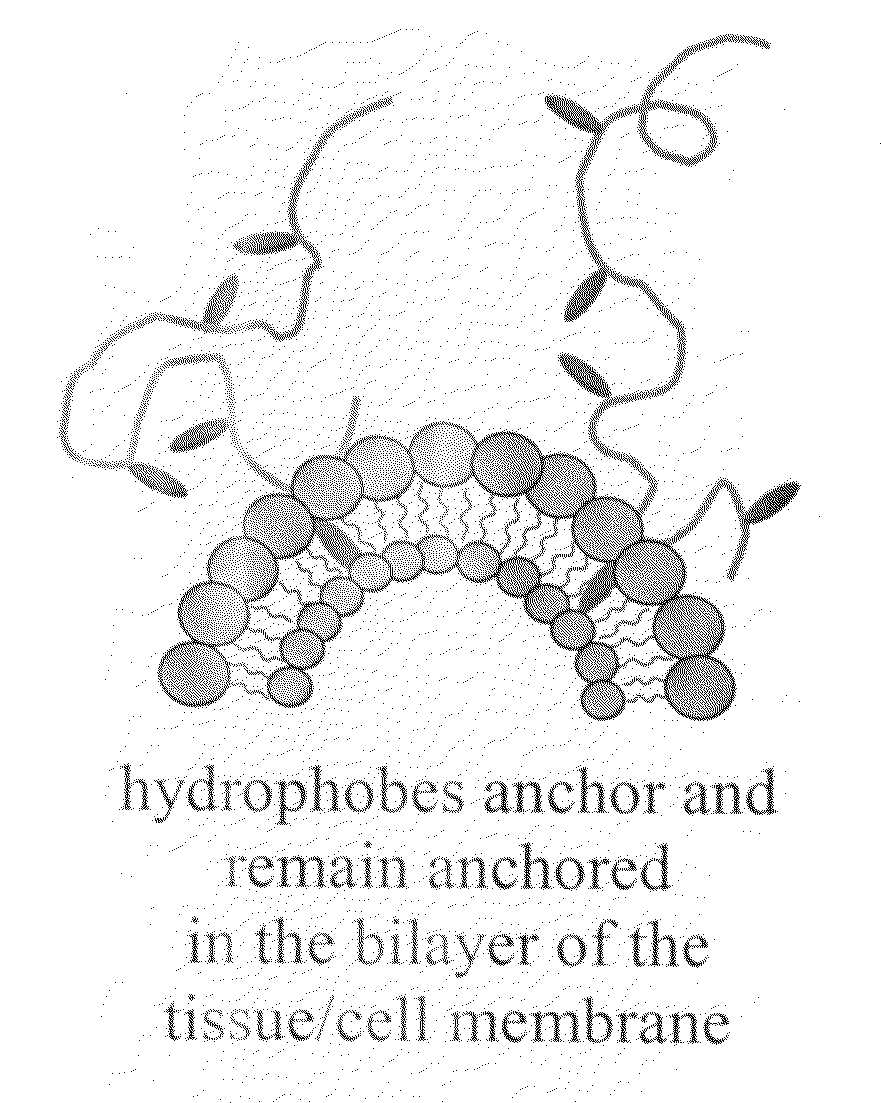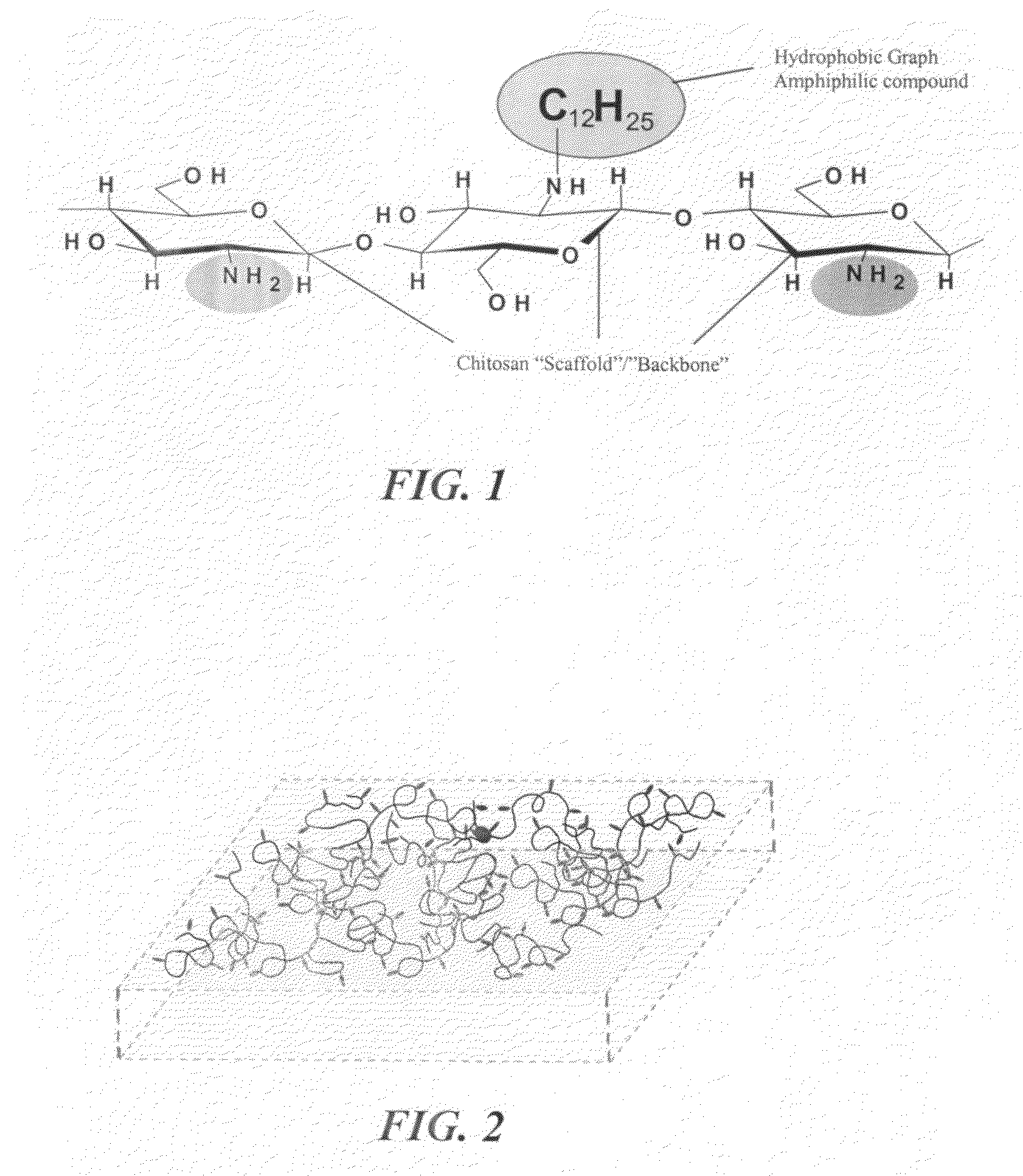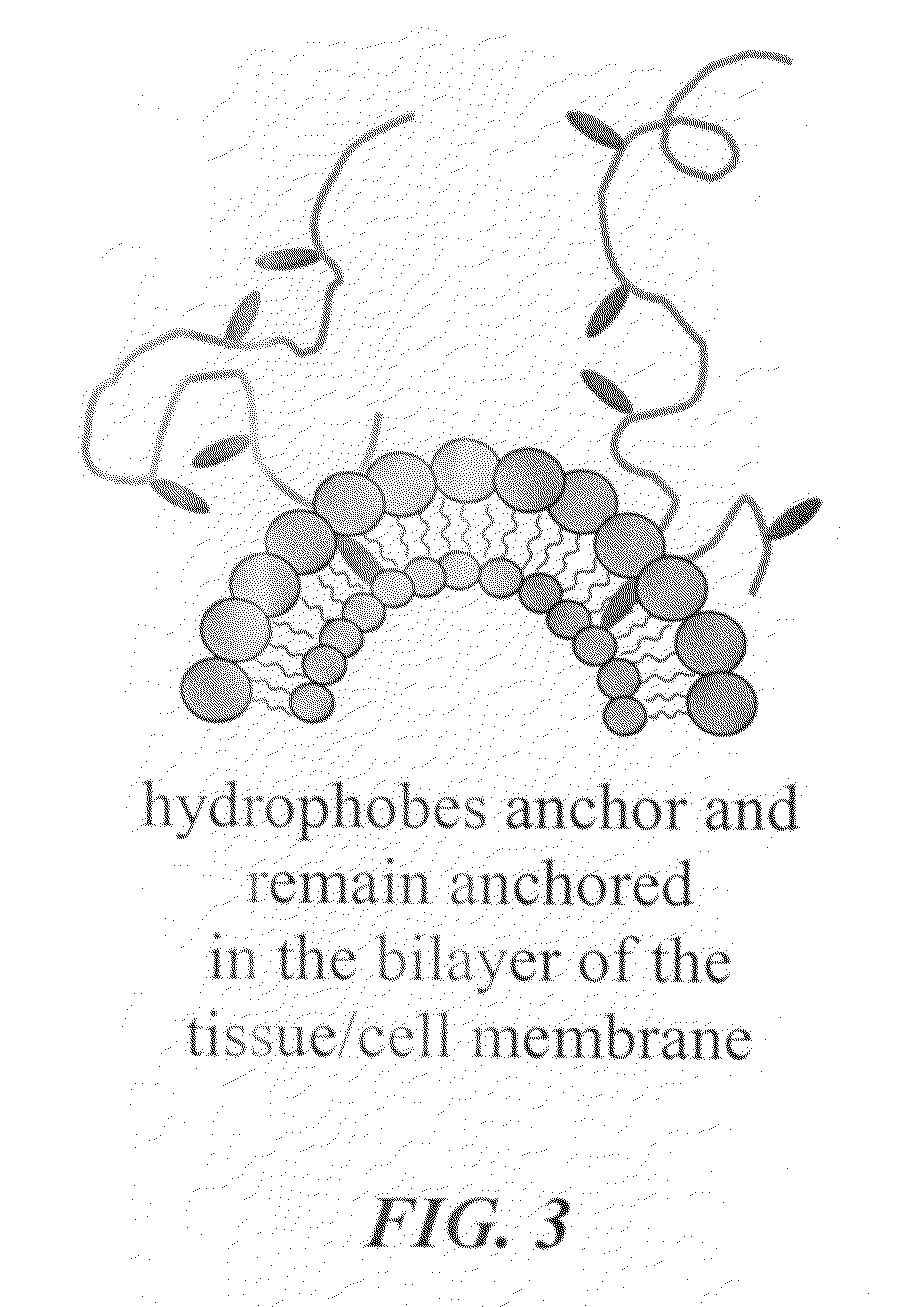Advanced functional biocompatible polymeric matrix used as a hemostatic agent and system for damaged tissues and cells
a biocompatible, advanced technology, applied in the field of hydrophobic modified polymers, can solve the problems of severe blood loss, hemorrhage control, and major problems in emergency medical care, and achieve the effects of improving hemorrhage control, reducing hemorrhage, and improving hemorrhage control
- Summary
- Abstract
- Description
- Claims
- Application Information
AI Technical Summary
Benefits of technology
Problems solved by technology
Method used
Image
Examples
Embodiment Construction
[0021]Reference will now be made in detail to the presently preferred embodiments of the invention, examples of which are illustrated in the accompanying drawings.
[0022]Referring generally to FIGS. 1 and 2, the current invention provides a novel composition of matter that is capable of promoting hemostasis and / or hemostatic response through hydrophobic interactions with tissue and / or cells. In preferred embodiments, the current invention provides a hydrophobically modified polymer matrix capable of hydrophobic interactions with various tissue and / or cells to promote hemostasis. The hydrophobically modified polymer provides a readily reactive matrix and is capable of maintaining its reactive nature through various formulations, such as in a solid-state film or liquid state solution.
[0023]In a preferred embodiment, the current invention provides a solid state, hemostatic tissue sealant sponge that is composed of at least one polymer and a plurality of short hydrophobic substituents at...
PUM
| Property | Measurement | Unit |
|---|---|---|
| wt % | aaaaa | aaaaa |
| speed | aaaaa | aaaaa |
| speed | aaaaa | aaaaa |
Abstract
Description
Claims
Application Information
 Login to View More
Login to View More - R&D
- Intellectual Property
- Life Sciences
- Materials
- Tech Scout
- Unparalleled Data Quality
- Higher Quality Content
- 60% Fewer Hallucinations
Browse by: Latest US Patents, China's latest patents, Technical Efficacy Thesaurus, Application Domain, Technology Topic, Popular Technical Reports.
© 2025 PatSnap. All rights reserved.Legal|Privacy policy|Modern Slavery Act Transparency Statement|Sitemap|About US| Contact US: help@patsnap.com



